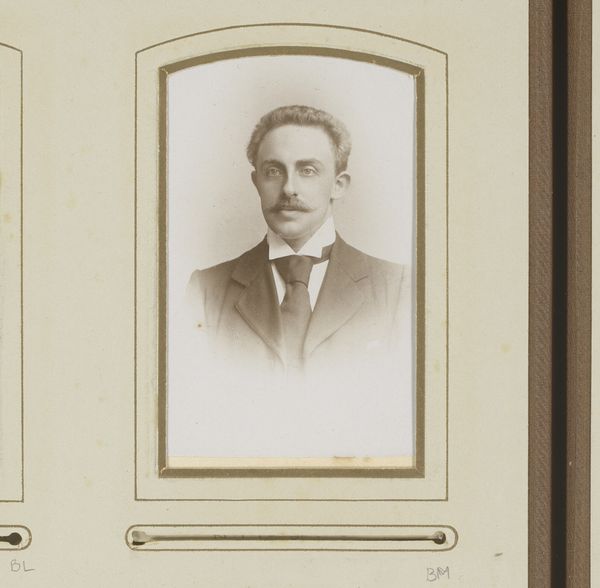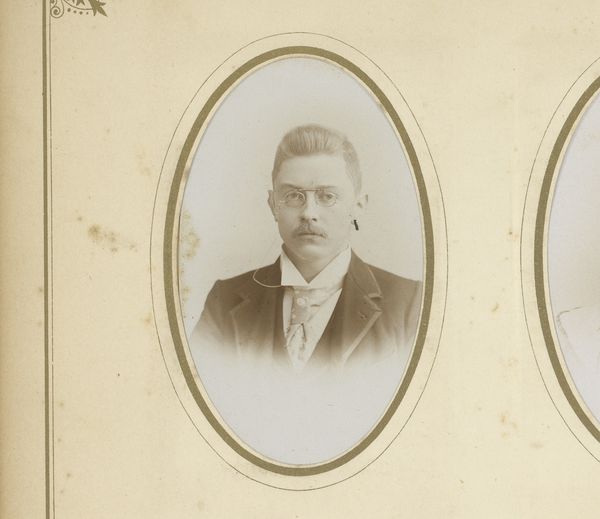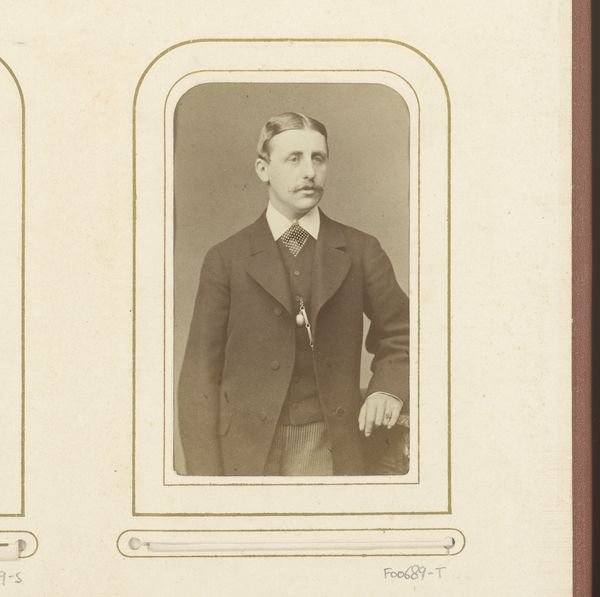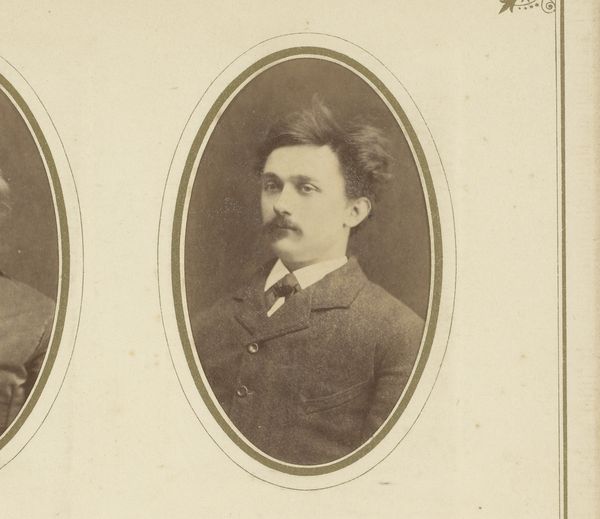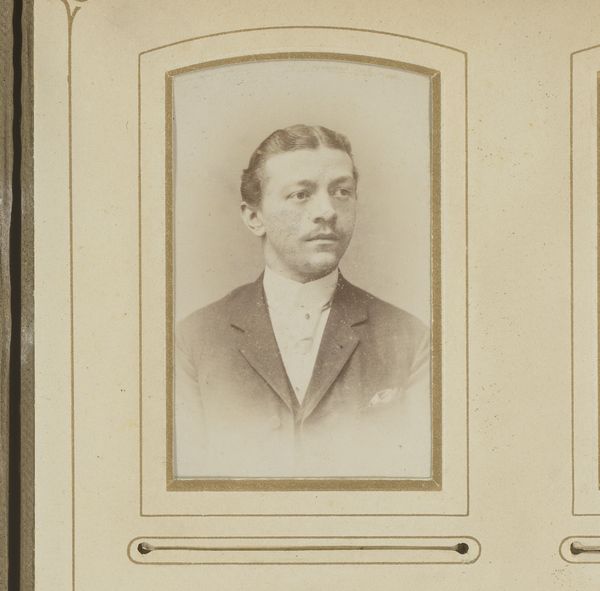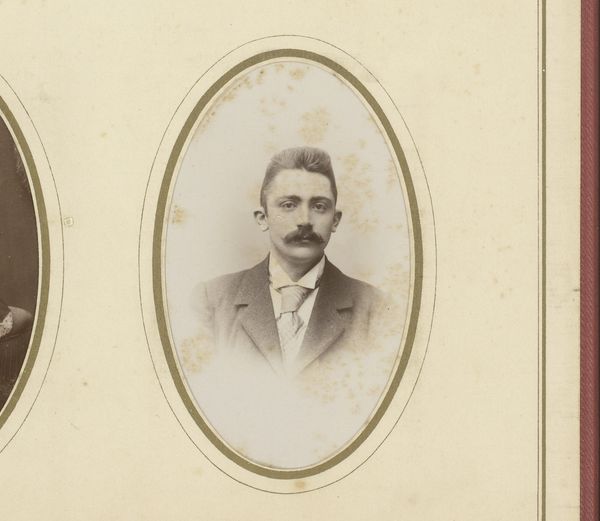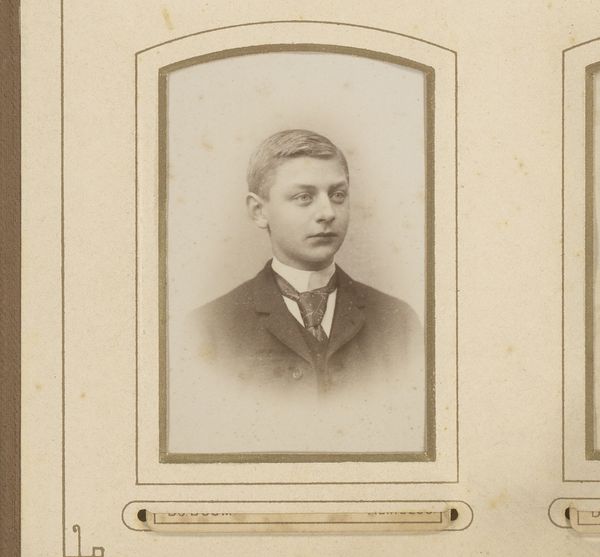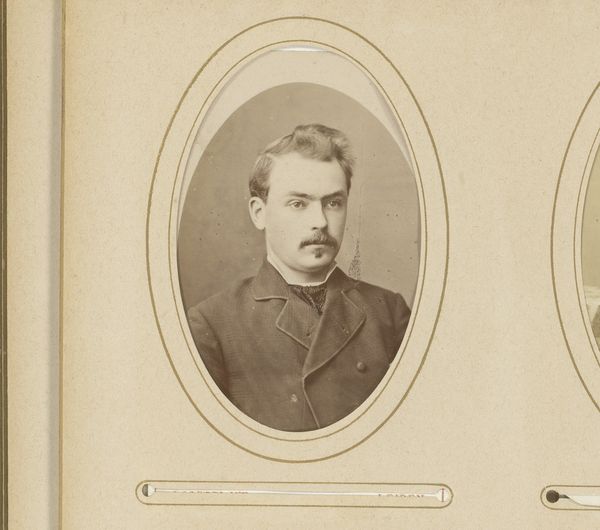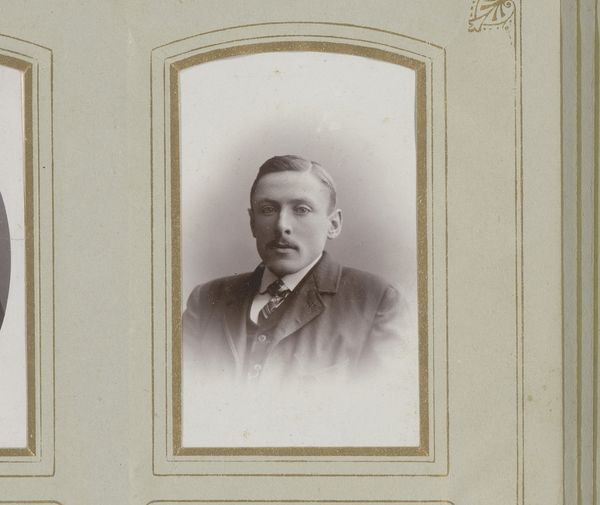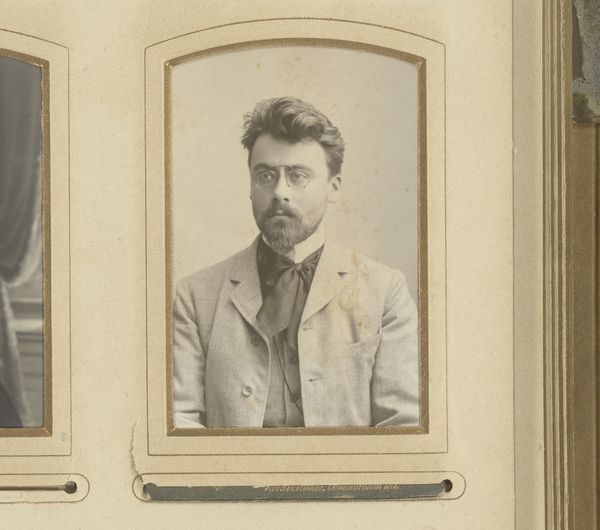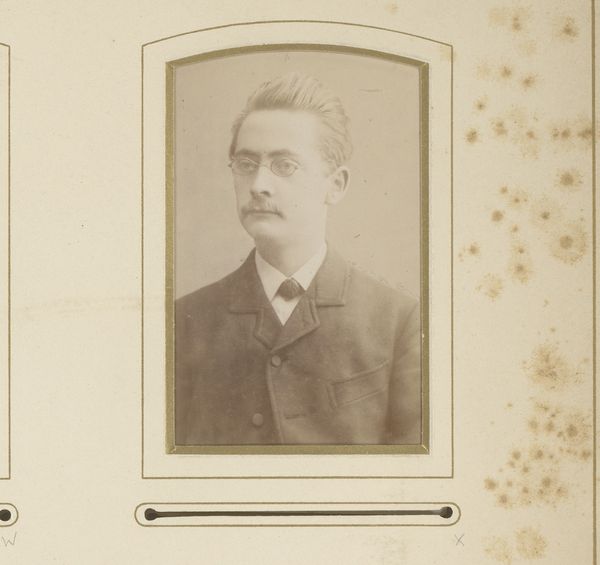
photography
#
portrait
#
photography
#
historical photography
#
realism
Dimensions: height 81 mm, width 52 mm
Copyright: Rijks Museum: Open Domain
Editor: We're looking at "Portret van een man met snor," a photograph from between 1860 and 1900 by Henry A. Chapman. The subdued tones lend the image a certain formality, don't you think? What catches your eye when you view this portrait? Curator: My attention is immediately drawn to the oval format itself, a deliberate compositional choice, which focuses attention on the internal, contained within those graphic limits. Consider how the photographer frames the subject’s face – its textures of light and shadow which delineate his features, but with a gentle graduation and tonal consistency throughout the frame. Does the sitter ever threaten to escape this containment, to overwhelm the photographer's control? Editor: I see what you mean. The way he's posed is very still, not dynamic at all. It definitely emphasizes a sort of...seriousness. So is the photographer focusing on realism in how they represent the sitter? Curator: "Realism" suggests an objective portrayal. But is the photographer truly offering unmediated realism? Reflect on how light plays across his suit. It is far from uniformly exposed, drawing your attention to certain elements such as his slight frown. Now think: How does the photographer achieve the fine-grained detail without stark contrast? What stylistic tools is Chapman employing, perhaps unconsciously, in constructing the work’s meaning? Editor: So it's more about how Chapman shapes the image to communicate something, rather than just documenting reality? Curator: Precisely! Consider the technical virtuosity required. Notice, for instance, how Chapman skillfully arranges visual and physical aspects—such as light, texture and compositional layout. Every creative choice leads toward affecting the audience’s appreciation. What, if any, deeper meaning may be hiding in this historical portrait’s pictorial rhetoric? Editor: It’s interesting to see the photograph as not just a record but as an constructed work of visual communication with specific tools, textures, composition elements. Curator: And a photograph’s supposed indexical reality can obscure how carefully constructed it is as art. Thank you, this has sharpened my gaze!
Comments
No comments
Be the first to comment and join the conversation on the ultimate creative platform.

